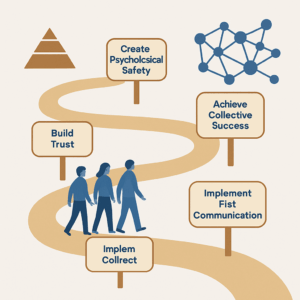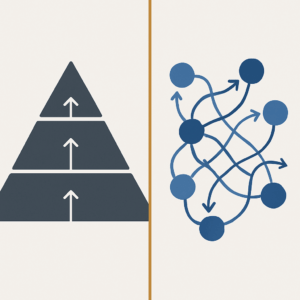Scandinavian leadership ideas have proven effective in various organizations.

Get Started
- Begin by reviewing communication practices—open and honest dialogue is essential.
Train managers in direct, facilitative communication and create regular feedback forums where employees share ideas freely.
Test flatter structures by giving teams more room to decide on their own.
Replace layers of unnecessary approvals with clear, delegated authority so decisions are made quickly and with collective input.
Empowerment Policies:
Implement policies that empower individuals to manage their own training and development.- Consider flexible work schedules, self-directed learning funds, and inclusive project teams that allow every voice to be heard.
- Establish reward systems that recognize both individual achievements and team efforts.
Pilot such measures in a few projects, monitor outcomes, and adjust strategies as needed.
These steps build a practical framework that supports continuous improvement while ensuring every team member feels valued.
By acting now, organizations can set the stage for a welcoming work environment that champions both trust and accountability.
Simple changes in communication and structure can boost overall performance and pave the way for ongoing improvements.
The Future of Talent Development
Modern work calls for leadership that is agile, supportive, and human-centered.
Scandinavian leadership emphasizes trust, fairness, and collective effort, offering a strategy to meet new challenges head-on.
As technology changes work processes and employee expectations adjust, companies that adopt these values will find themselves better prepared.
Focusing on autonomy, clear purpose, and strong interpersonal connections can transform talent development into a unified, practical strategy.
Emphasizing these principles lays a solid foundation for an organization that adapts to market shifts while maintaining a strong, inclusive culture.
The shift toward this leadership model may be gradual, but its impact on innovation and employee morale is lasting.
Are you ready to apply these methods to improve talent development within your organization?
Take the first steps by reviewing your policies, communication methods, and organizational structures. A renewed focus on individual abilities and team cohesion can help you build a future where every member contributes to shared success.
This article is part of a series on talent development through Scandinavian leadership principles and strengths-based methodology. Next week, we examine how a strengths-based approach builds inclusive teams in global organizations.
About TalentInsights:
We help organizations unlock human potential through strengths-based talent development rooted in Scandinavian leadership principles. Follow your heart and find your strengths at talentinsights.biz.




